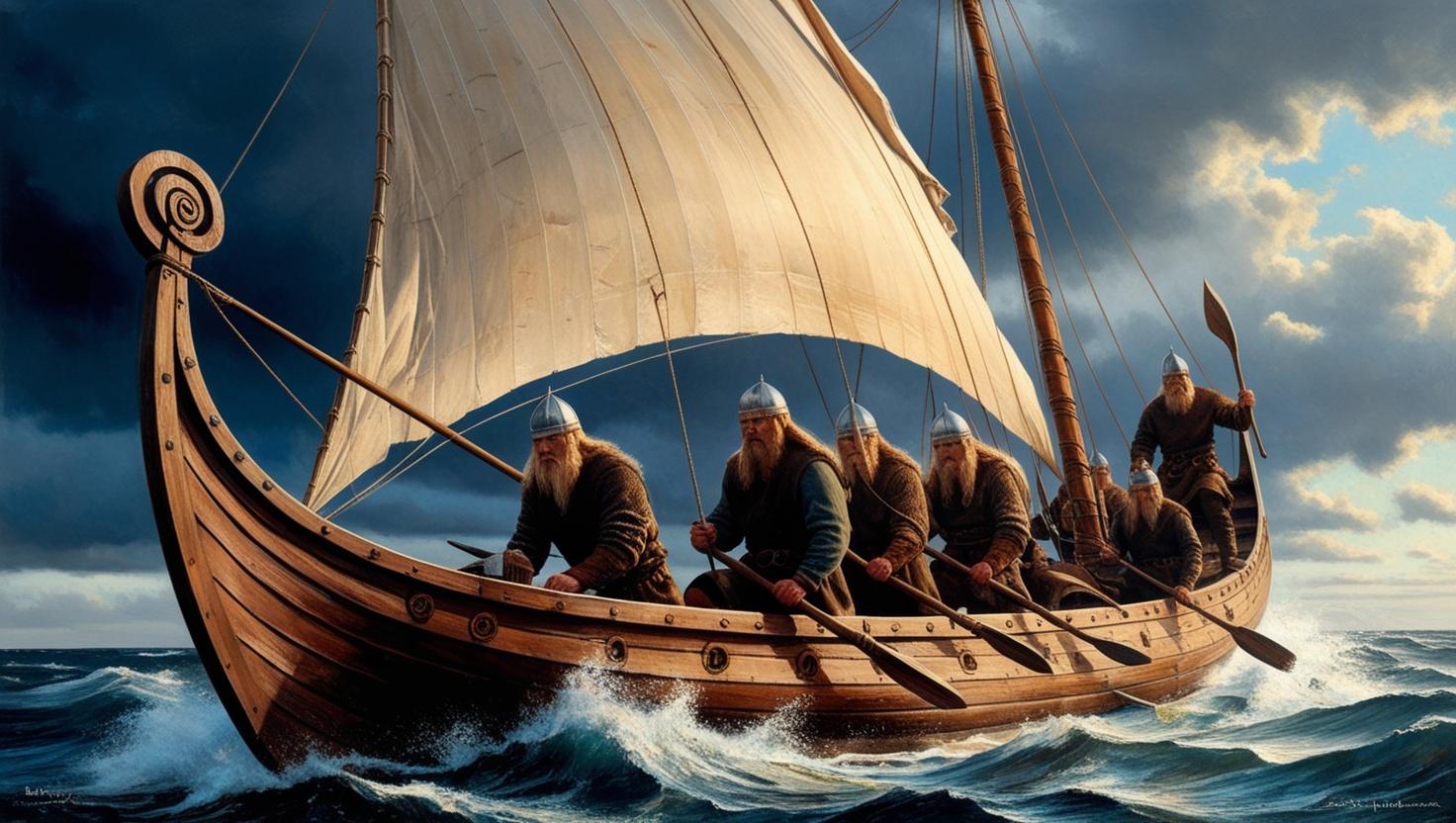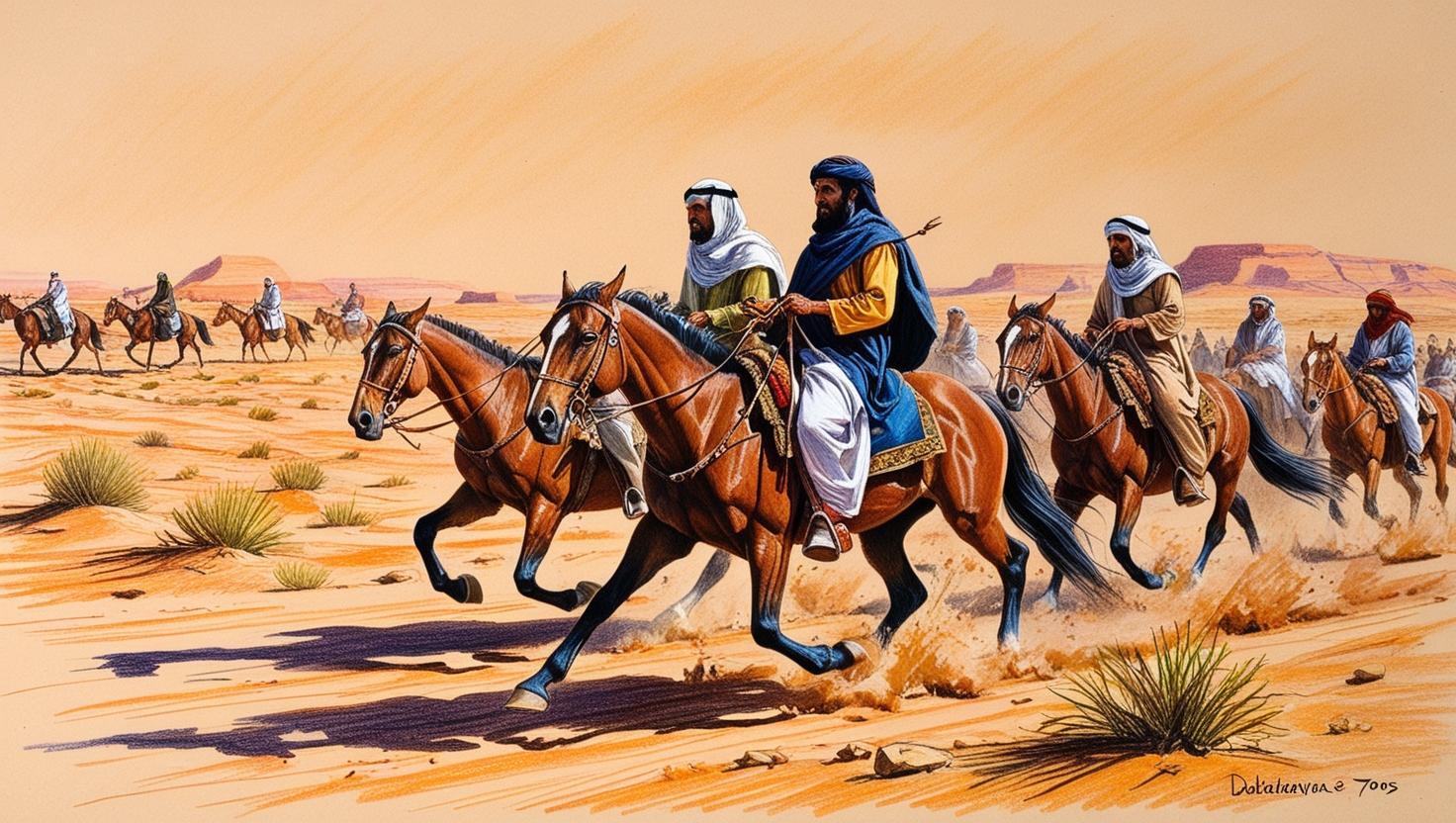

During the Early Middle Ages, two civilizations emerged that would shape the world: the Islamic and Western civilizations. Their beginnings can be traced back to two distinct groups of people: the Bedouin tribes from the Arabian Peninsula and the seafaring Vikings from the far North.

Seafaring Vikings from the far North
Inspired by a new Divine revelation, the Arabs embarked on a rapid expansion across Asia and Africa. In just one generation, they brought down the mighty Persian and Roman empires. Meanwhile, the Vikings, known for their plundering and settlement activities, dominated Northern Europe for over two centuries. The legacy of colonization and military dominance carried on through their descendants, the Normans in the West and the Rus in the East. From the aftermath of these dramatic events, the civilizations of Islam and the West emerged.

Arabs embarked on a rapid expansion across Asia and Africa
The history of these civilizations spans approximately 1,400 years, but it’s important to note that human history extends much further back in time. The existence of human beings can be traced back at least 200,000 years (Homo sapiens) or perhaps even as long as two million years, based on archaeological evidence of tool making.
In the 19th century, global powers such as Britain, France, and Germany took on the task of documenting the history of their civilizations. However, this endeavor often mixed fact with fantasy. There was a desire to present Europeans as the rightful rulers, which led to the search for evidence of an ancient pedigree. The narrative began with Ancient Greece, portraying the Greeks as unique in their pursuit of rational thought and science. This legacy then passed on to the Romans, who, despite being oppressive and imperialistic, were considered a great civilization that valued the rule of law. The Middle Ages were depicted as a regressive and feudalistic period, but with the Renaissance and the rediscovery of Greek and Roman heritage, Europe supposedly experienced enlightenment, progress, scientific advancements, and military triumphs over the rest of the world. This version of history became the standard taught in colonial schools worldwide.
At the outset, it is essential to dispel the claim that the West is the true inheritor of the ancient civilizations of Greece and Rome. Ancient Rome and Greece were primarily Mediterranean civilizations centered around Asia and North Africa. The core nations of Western civilization, such as Britain, France, and Germany, trace their origins to Germanic and Nordic tribes that emerged outside the realms of Rome and Greece.
It is common to read that the Roman Empire fell in the 5th century CE with the sacking of Rome by the Barbarians. However, this is only true for the western half of the Empire. The capital had already shifted to Constantinople (known as ‘the New Rome’) in 330, and the Eastern Roman Empire endured for another thousand years until its fall to the Ottomans in 1453. Curiously, Western textbooks often refer to the Eastern Roman Empire as ‘Byzantium’ or ‘the Byzantine Empire,’ a name unknown to the Eastern Romans themselves.
Many standard textbooks and historical accounts demonstrate a strong Euro-centric bias. Fortunately, in recent decades, Western historians have sought to produce more balanced studies. Despite these efforts, remnants of the former bias can still be found, particularly in school textbooks, and subtle biases are difficult to eliminate entirely. It is important to acknowledge that even the author’s outlook on history may contain its own biases. My aim is to maintain objectivity and provide fresh perspectives that may be overlooked in the conventional Western narrative.
Another myth propagated by colonial empires was the notion of Europe as a separate continent. However, there is no factual basis for this belief. Europe can be seen as an extremity or sub-continent of Asia. Furthermore, the world map was often presented with Europe at the top, creating a distorted perspective that made Northern countries appear disproportionately larger compared to others.
The nineteenth century also witnessed the rise of the ‘evolution myth,’ which combined scientific theories with racism. White Europeans considered themselves the pinnacle of an evolutionary journey, labeling themselves as the ‘Rational White Man.’ According to this perspective, humanity had progressed from primitive savages through various stages, culminating in the European civilization characterized by rational thought, democracy, industrialized economies, and scientific advancements.
The West has long presented its version of history, but now it is time to critically re-tell that story. Intelligent readers can evaluate both narratives and determine for themselves which one aligns more closely with reality.